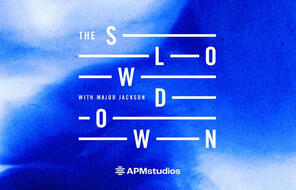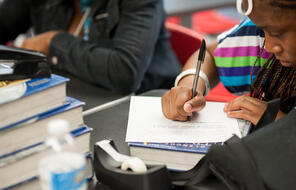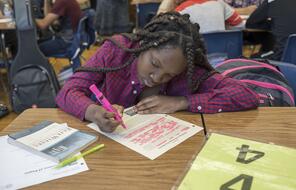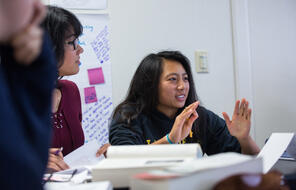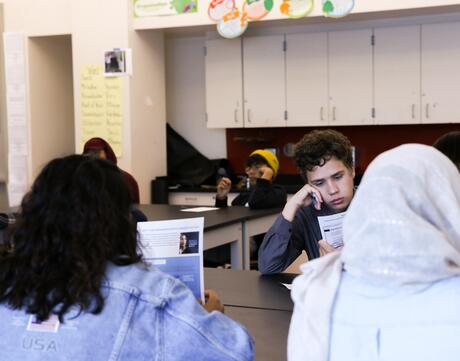
The Dangers of Being an Outsider
At a Glance
Language
English — USSubject
- English & Language Arts
Grade
7–8Duration
One 50-min class period- Culture & Identity
Overview
About This Lesson
In the introduction to this lesson’s episode of The Slowdown podcast, poet Ada Limón asks listeners: “How can we thrive if we do not know where we belong?” Building on the foundational work in previous lessons to introduce the concepts of belonging, group membership, fitting in, and values, in this lesson, students will analyze a short audio essay by Limón and a poem by Hazem Fahmy in order to consider what is at stake for some individuals when they feel like their belonging is threatened. Both Limón and the speaker of Fahmy’s poem straddle borders of nationality, language, and culture. Their stories provide an opportunity to cultivate empathy for individuals who may feel the need to change aspects of who they are in order to experience safety and belonging in American society.
Preparing to Teach
A Note to Teachers
Lesson Plans
Activities
Homework
Extension Activity
Materials and Downloads
Quick Downloads
Download the Files
Download allGet Files Via Google
The Dangers of Being an Outsider
Group Membership and Belonging
Navigating Social Hierarchies
Additional Resources
Unlimited Access to Learning. More Added Every Month.
Facing History & Ourselves is designed for educators who want to help students explore identity, think critically, grow emotionally, act ethically, and participate in civic life. It’s hard work, so we’ve developed some go-to professional learning opportunities to help you along the way.
Exploring ELA Text Selection with Julia Torres
On-Demand

Working for Justice, Equity and Civic Agency in Our Schools: A Conversation with Clint Smith
On-Demand

Centering Student Voices to Build Community and Agency
On-Demand


